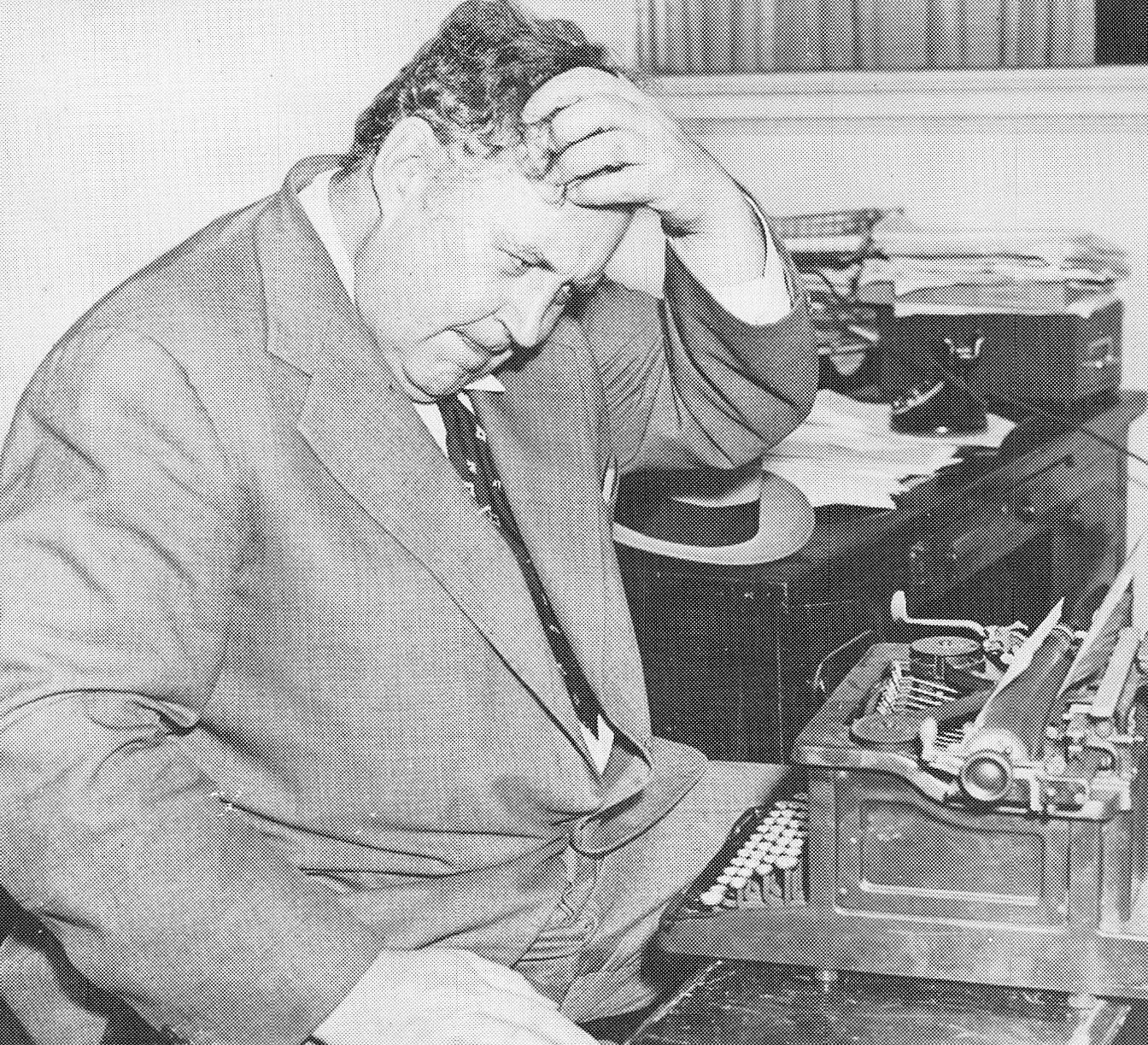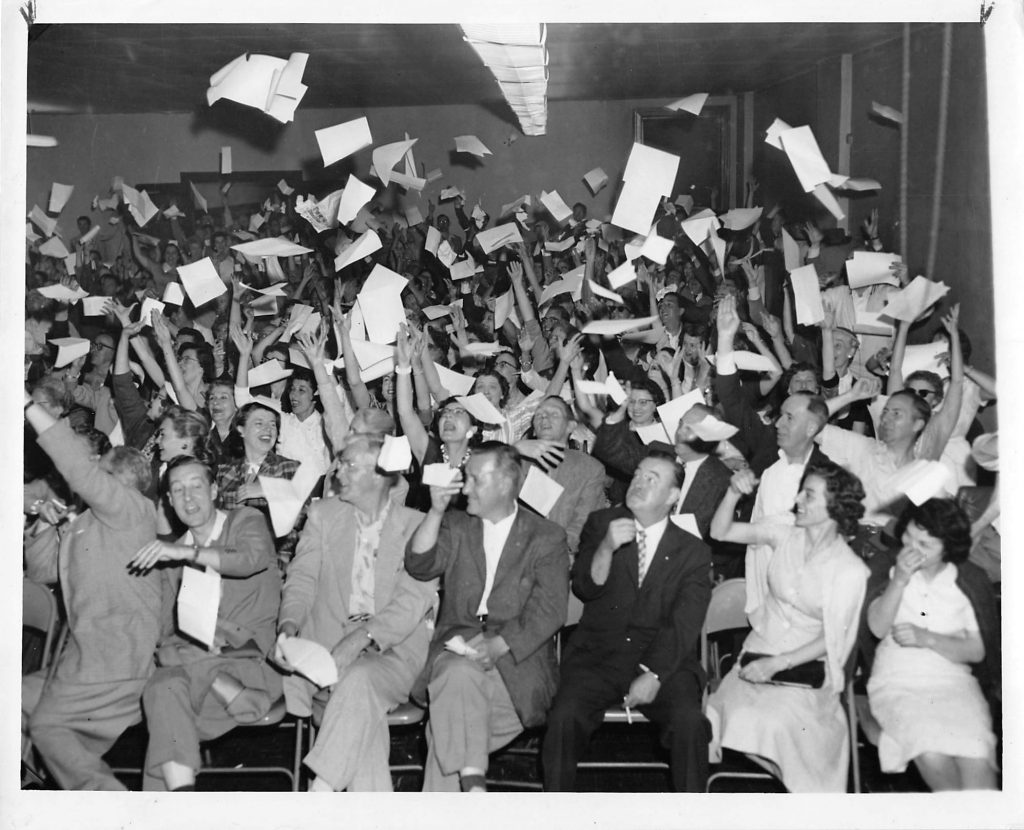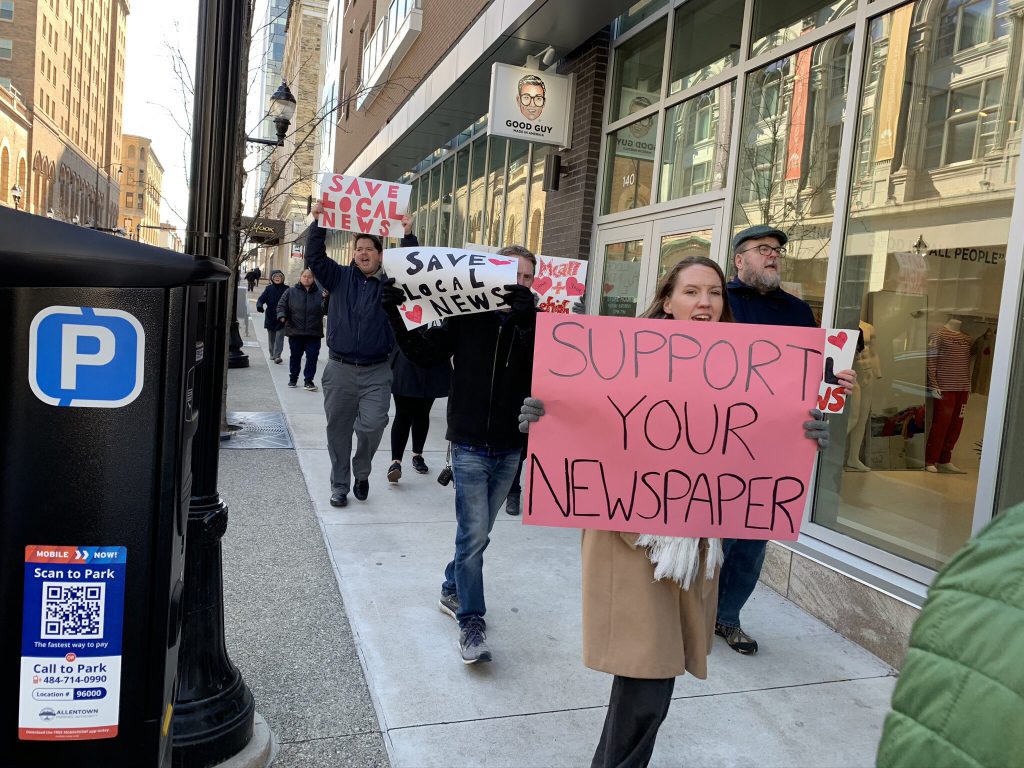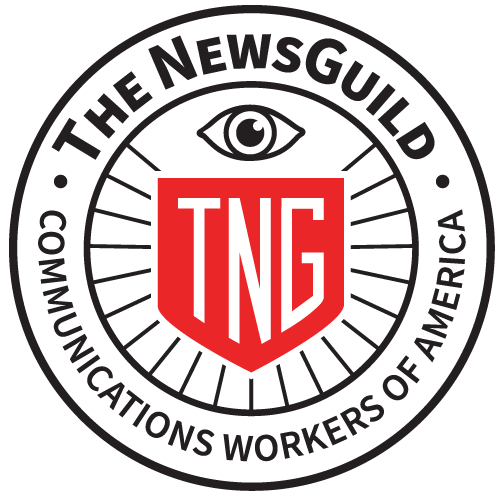The founding of The NewsGuild-CWA in 1933 came during a time of growing interest in unionizing in the United States as the Great Depression stoked discontent among newspaper writers about low wages, exhausting working conditions and freedom from the intrusion of corporate interests.
Almost nine decades later, surging interest in union organizing since 2015 at newspapers and online news sites has centered on similar concerns, along with the new issues of newsroom diversity, pay equity for women and people of color and the preservation of a work/life balance amid a 24/7 news cycle.
The goal of workers seeking representation from the Guild – an organization now composed of more than 25,000 journalists and others in 200 media organizations in the United States and Canada – continues to be a “seat at the table” where decisions are made affecting their careers and the quality of journalism.
It’s a concept articulated by syndicated newspaper columnist Heywood Broun, a founder and the first president of what originally was called the American Newspaper Guild. Broun, then 44, well-paid and based at the New York World-Telegram, wrote in an August 1933 column that he would help form “a union of reporters.”

Described by labor historian Christopher Phelps as a “big-hearted, gin-imbibing, lumbering bear of a man,” Broun took on this cause at a time when many journalists viewed themselves as professional “elite” even though few had college degrees and many clung to the romantic notion that a byline and notoriety eventually would lead to high pay. They were known as “newsmen” – a term that was part of the sexist language of the time, when there was rampant discrimination and few female reporters. Broun knew many journalists were frustrated that they generally earned less than unionized press operators and composing-room workers.
“The men who make up the papers of this country would never look upon themselves as what they really are – hacks and white-collar slaves,” Broun wrote. “Any attempt to unionize leg, rewrite, desk or makeup men would be laughed to death by these editorial hacks themselves. Union? Why, that’s all right for dopes like printers, not for smart guys like newspaper men.”
Broun wrote that the unionized, non-editorial workers were “getting on average some 30% better than the smart Fourth Estaters” while “the ‘smart’ editorial department boys will continue to work 48 hours a week because they consider unionization as lowering their dignity.”
Interest in unionizing editorial workers first came from the International Typographical Union in the late 1800s, but the workers’ participation in ITU locals waned by the mid-1920s. The ITU eventually relinquished jurisdiction over them amid union apathy among journalists and disagreements with ITU policies.
However, interest in a union catering to journalists remained because of oppressive economics and working conditions. Historian Daniel J. Leab wrote that a general reporter in the 1920s “rarely got home to his family and was not recognized by his children when he did. Some city editors even went so far as to discourage their reporters’ marriage ambitions, for family demands might interfere with the single-minded pursuit of a story.”
Leab wrote that chronically low pay led many reporters and editors to accept “money and other favors for slanting or suppressing stories.” Former heavyweight boxing champion Gene Tunney, according to Leab, was open about the fact that he paid 5% of his purses to sports writers to “ensure favorable publicity and that most other fighters in the 1920s did the same.”
Broun’s 1933 column sparked the Guild’s formation a few months later. It was the era of the New Deal, President Franklin Roosevelt’s plan for relief, reform and recovery from the Depression. Two years later, in 1935, the National Labor Relations Act gave private-sector workers a federally protected right to unionize, making Guild membership safer in the eyes of many journalists.
Broun and others decided to call the new organization a guild because the word union “might repel some of the more conservative men,” according to I.L. Kenen, a political writer for the Cleveland News. By June 1934, 10 months after Broun’s first column advocating a union, the Guild had 7,000 members at chapters in places such as New York, Philadelphia, Cleveland, Buffalo, Cincinnati, Duluth, Minnesota, and Rockford, Illinois. The first signed contract came the next year with The Philadelphia Record and included language on maximum hours, overtime, a minimum pay scale and paid vacations.
The next several decades saw the Guild grow along with the rest of the labor movement.
The Guild affiliated with the American Federation of Labor in 1936, then left to become part of the new Congress of Industrial Organizations in 1937 when the Guild expanded to represent newspaper workers outside newsrooms, such as ad clerks and circulation employees.
The Heywood Broun Award for journalistic achievement was established in the 1940s, and in the 1950s, the Canadian Region was established.

Philadelphia toss threatening “Come Back Or Else” letters from management into the air in a show of union solidarity in 1958.
Through contracts, grievances and other forms of activism, the Guild in the 1960s fought against racial discrimination in the news industry in hiring and promotion.
The union changed its name to The Newspaper Guild in the 1970s, initiated its bargaining program to accommodate increased automation, and formed a Guild-wide, portable pension plan.
The Guild’s membership reached its peak of more than 34,000 in the 1980s, a decade when the union campaigned to protect members from the health hazards of video-display terminals.
In the 1990s, the Guild led the charge to protect workers from repetitive-strain injuries related to keyboard use. Members overwhelmingly approved the Guild’s 1995 merger with the Communications Workers of America, becoming a sector of the 700,000-member union.
The Guild’s membership has expanded from journalists to include many other employees of newspapers and news agencies, such as employees of digital-only publications and IT employees. It also represents workers in communications jobs, such as spoken-language and sign-language interpreters and translators; social-justice workers; and nonprofit and public-sector professionals.
The Guild became active in representing employees of online news sites in the 2000s, first with editorial and advertising employees of the San Francisco Chronicle’s website in 2001 and in 2009 with journalists at Truthout, a nonprofit, online-only news site. The Guild changed its official change – from The Newspaper Guild to the NewsGuild – in 2015 to reflect the growth of online media and appeal to workers in all platforms, whether in print or online.
Despite declines in overall union membership nationwide, with private-sector union membership dropping from 16.8% of workers in 1983 to 6.2% in 2019 (public-sector union membership is more than five times higher), the Guild has benefited from a surge of organizing since the mid-2010s.
Like during the Guild’s early days, newspaper publishers and news-site owners often opposed unions. But those spearheading the recent organizing drives often were in their 20s and 30s, the age group with the highest approval rate for unions at a time of wage stagnation and income equality.
Pro-union fervor took hold at large newspapers that had shunned unions in the past, such as the Los Angeles Times, where workers voted overwhelmingly to join the Guild in January 2018, and at the Chicago Tribune, where journalists seeking to form Guild units were voluntarily recognized a few months later. Also joining the wave were online-only news sites such as Law360 and BuzzFeed News and the magazines New York and The New Republic.
Many of the newly organized units, large and small, were in anti-union states in the South, Midwest and West, such as Arizona, Virginia, Florida, Texas and Nebraska, and many were among the first unionized newspaper newsrooms in their states’ history.
Guild contracts and representation helped ease the impact of downsizing in the news industry in recent years and during the COVID-19 pandemic. But the union went further, taking the opportunity to advocate for the preservation of local news amid a consolidation of news industry ownership in hedge-fund companies such as Alden Global Capital and the publicly traded chains Gannett and Lee Enterprises.
With huge amounts of the industry’s traditional revenue source of revenue – print advertising – moving to Google and Facebook, the Guild has taken the unusual step of advocating for government support of news operations while maintaining editorial autonomy from government interference.
The Guild argues that a free press is an essential part of democracy, and local news is essential to hold elected officials and institutions responsible. It’s a message that the Guild’s founders championed, and one that today’s Guild leaders and members are determined to promote in the interest of good jobs, good journalism and a healthy society.

Sources:
*“What’s Driving the New Wave of Unionization Sweeping Digital Newsrooms,” by Steven Greenhouse, Columbia Journalism Review, Spring/Summer 2018 issue.
*“A Union of Individuals,” a book by Daniel J. Leab, published in 1970 by Columbia University Press.
*”Why Newsrooms are Unionizing Now,” by Steven Greenhouse, Nieman Reports, Spring 2019.
*The NewsGuild-CWA.
